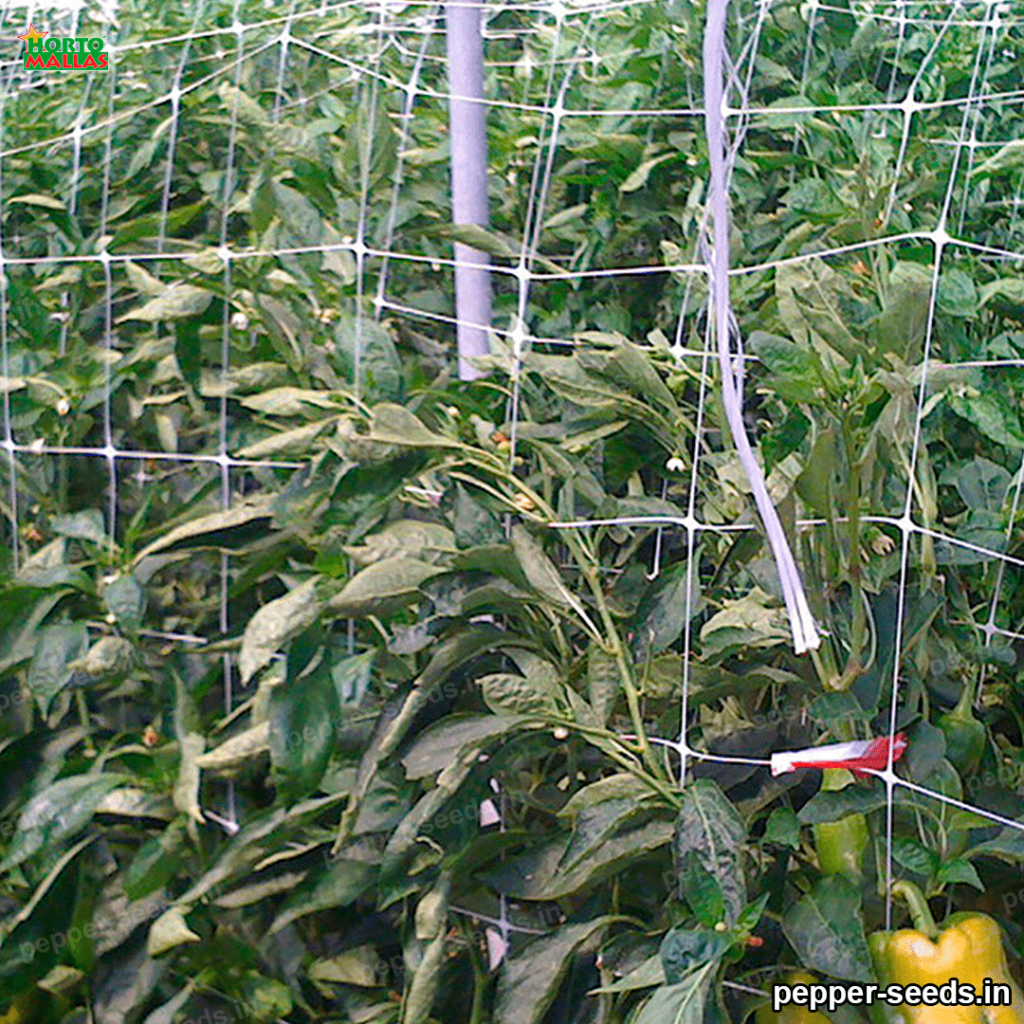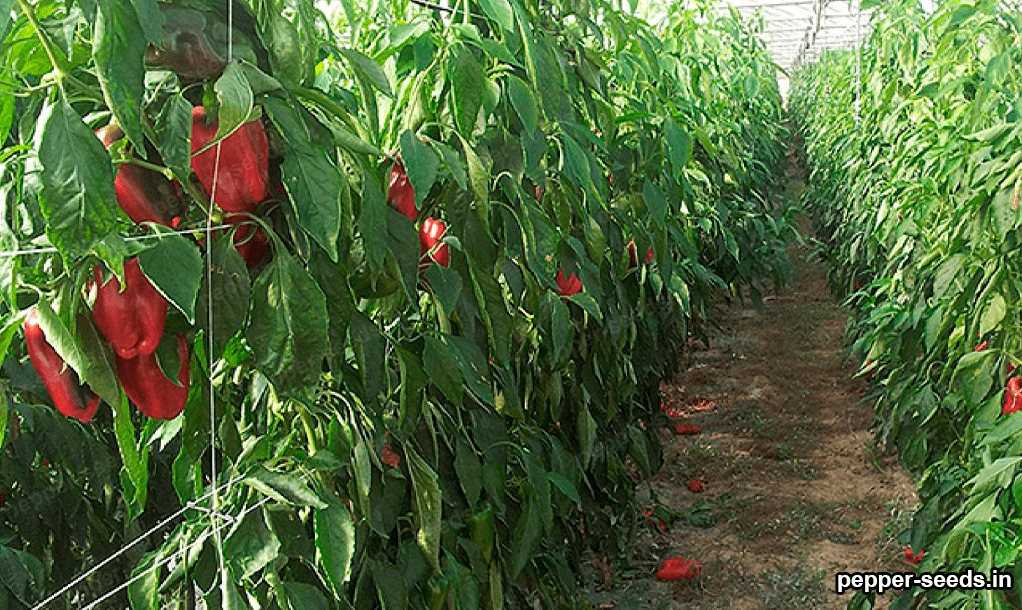Introduction
Crop trellising net is a very useful solution to a wide variety of problems related to crop production and quality. This netting can be easily and quickly install on a crop support. Allowing crops to spread freely while their branches are nourished through the netting, resulting in better yields.
Crop trellising net is a mesh or fabric netting developed especially for the greenhouse space. This means that it is lighter, more versatile and more resistant to damage than traditional netting. This netting is design to provide a better spatial matrix of the environment and provide better crop quality and plant maturation. This netting is design to allow winds and sun rays to penetrate easily and provide a softer soil for crops to grow smoothly.
It is use to reinforce the structural guidelines of the plant, ensuring that the branches of the plants do not wear out or break due to external damage. The process of trellising is done by placing the mesh in the form of a column to support the plant. Thus reducing problems cause by overweight, friction and crop weight load.
It can be use for protection against pests and diseases
This netting can be place between plants, allowing light and air to circulate between them. This helps to reduce the problems of weed discoloration, weeds. As well as the loosening of diseases cause by insects can also be reduce. Crop trellising net can also be use to hold certain types of plant gauges. Allowing crop controllers to easily monitor crop conditions without having to physically move to the site.
Another great advantage of crop trellising net is its resistance to degradation. This netting is made from wear-resistant materials. Which means it lasts much longer than traditional materials. This means that the mesh will have a much longer service life and will help reduce the investments needed to keep the greenhouse in good condition.

Although it is a good solution, investing in a mesh for crop trellising is not an easy task
Proper installation requires a clear view of the structure of the growing space, the size of the area cover, the number of plants to be trellis and the type of crop, among other factors. Once these parameters have been establish, the next step is to evaluate all available crop trellising net options and select the best one for the specific situation. Once the mesh is selected, the supports must be installed carefully to ensure proper fit and secure support for the plants.
Crop trellising net is a reliable solution to improve crop production without incurring high installation and maintenance costs. This netting is designed to provide better crop quality and plant maturation, in addition to offering protection against pests and diseases. This netting is also an excellent choice for protection against wind and sun damage, while its resistance to degradation allows it to remain intact for long periods of time. Finally, proper installation requires a thorough knowledge of the terrain before choosing it, as well as proper installation to ensure a secure placement of the netting.
What is the process to follow to correctly install a trellising net?
Installing a trellising screen is one of the best ways to protect your garden. This mesh is use to keep small animals and birds away in order to prevent damage to your garden plants. In addition, these meshes also offer extra insurance for your plants as they prevent wind when there are strong winds. This will reduce the amount of damage caused by the buildup of soil and dirt that the wind would accumulate on the leaves.
To properly install a trellising screen. There are a number of steps you should follow to ensure a good end result.
The first step is to make sure that the screen fits the size and shape of your garden. This means making sure that the width and length of the mesh fits the desired size. The mesh should also be high enough to cover the areas you want to protect. Once you have the mesh, the next step is placement.

To lay the trellising net, you must first cut it to the size you need
Then you must attach the mesh supports with a wooden post to hold the mesh in place. These posts should be buried in the ground. In order to prevent the mesh from warping due to inclement weather.
Once the posts are install, anchor the mesh to the posts using sturdy steel staples. This will also ensure that the screen stays in place with a strong grip on the sides of the garden. Be sure to place each staple close to the top edge to achieve the desired distance.
Once the screen installation is complete, be sure to check it periodically for damage caused by weather or animals. Replace any damaged sections properly to avoid any problems with your landscape. If the screen is properly install and has received little abuse, repairs should be minimal.
If you want to add an extra touch to the screen, you can use climbing plants on the posts to decorate the area as well as add security. This will also serve to mask the posts if you want a more natural look.
Properly installing a trellising screen is extremely important to reduce animal damage to the plants in your garden. Performing the steps listed above will allow the user to ensure proper installation to ensure the best protection for your garden. Once the posts are in the ground, be sure to check the mesh frequently to make sure the elements have not caused any damage and replace any damaged sections immediately. This will not only reduce animal damage, but also keep your garden safe and protected from the elements during the summer months.
What tools are require for the installation of a trellising net?
A tutoring mesh connects different equipment and devices through networks that are independent of each other. This technology allows organizations to expand their coverage and network, and to offer better services and communications. If you want to install a mentoring mesh, there are a variety of network tools and equipment needed to achieve the goal.
First, you need a switch. This is network equipment that connects different devices within the network, allowing all of them to send and receive data. The switch is use to distribute bandwidth throughout the network, allowing better communication between devices. Switches are also use to isolate certain devices to prevent disruptions in the network.
Secondly, an access point (AP) device is essential for a mesh tutor. This allows devices to connect to the network through a single access point. This opens up the possibility of connecting multiple devices together, resulting in greater coverage.
Additionally, any good tutoring mesh will also require an omni antenna. This antenna is use to distribute the signal strength over a wide radial area. Signals from the antenna propagate throughout the entire network, which will improve signal quality. This allows the organization to have a network with better coverage and quality.

Another important tool for mesh mentoring is an external router
This allows the mesh to connect to other external systems. This allows companies to connect their equipment to other networks such as the Internet, creating a larger and more versatile interconnection network.
The tutoring mesh also needs a firewall. Firewalls allow the organization to filter the data being sent and received on the network to prevent any internal or external threats. This allows companies to protect their systems and data from any threats that may come from outside the network.
There are several tools and equipment required for the installation of a guarding mesh. This includes a switch, an access point device, an omni antenna, an external router and a firewall. These necessary elements should be consider when planning the network for a mentoring mesh. The correct use of these tools will allow the company to guarantee a secure, reliable and highly functional network.
The most important of all these tools for the installation of a tutoring mesh is data monitoring
This is where the organization must effectively monitor and manage the network to ensure that all devices are functioning as expected and there is no external threat to the network. Data surveillance also ensures that the guardian mesh meets the appropriate standards for data security. These security standards are essential for the guardianship mesh, and without it, the data would not be secure.
There are several tools and equipment that are require for the installation of a tutoring mesh. These include a switch, an access point device, an omni antenna, an external router and a firewall. In addition, proper data monitoring is also necessary to ensure the security of the network. Selecting the right tool and equipment for the mentoring mesh will allow for better coverage and increased data security, which will maximize network performance and productivity in the long run.